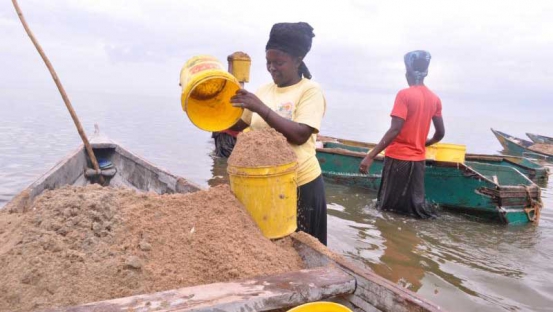
Mention Lake Victoria and what comes to mind is fish. But things are changing pretty fast at the lakeside town and after years of depleting fish stock in the lake, dozens of residents in Nyanza have resorted to sand harvesting to eke out a living. Indeed, a phenomenon only associated to Ukambani and Northern Kenyan is now taking root in the region, and sand harvesting is the new way of making that extra coin.
So deep into the activity are residents that Horace Ochola from Chuowe beach in Homa Bay County is now torn between remaining a fisherman or completely delving into sand harvesting.